Food and Nutrition > EXAM REVIEW > HSS2342 Nutritional Determinants of Health Final Exam Review (All)
HSS2342 Nutritional Determinants of Health Final Exam Review
Document Content and Description Below
HSS2342 Nutritional Determinants of Health Final Exam Review Life Cycle Nutrition: Infancy, Childhood, and Adolescence Nutrition During Infancy Infants grow very quickly in the first year o Di... rectly reflects nutrient intake o Energy requirement is twice that of an adult o First six months based on average intakes of healthy full-term infants that are fed breast milk. Second dix months recommendations reflect intakes from solid foods as well as breast milk Carbohydrates o Infants use relatively more glucose, about 60% of daily total energy intake o Brain size is ~12% of body weight vs. ~2% in adults Fat o Provides most of the energy in breast milk and standard infant formula. High energy density supports rapid growth of early infancy Protein o Most essential to growth, basic building material of body’s tissues o Protein overload stresses liver and kidneys (have to metabolize and excrete excess nitrogen) Signs include acidosis, dehydration, diarrhea, elevated blood ammonia, elevated blood urea, and fever Not common, but have been in observed in infants that are fed inappropriate foods such as skim milk or concentrated formula Vitamins and Minerals o In proportion to body weight, infant’s needs for vitamins and minerals are almost double that of an adult Water o The younger the infant, the greater the body percentage of water o Breast milk or formula usually provides enough water to replace fluid loss in a healthy infant o If environmental temperature is extremely high, infants need supplemental water o Because much of the fluid in an infant’s body is located outside the cells (between the cells and blood vessels) rapid fluid losses and the resulting dehydration can be life threatening o Conditions that cause major fluid loss like vomiting or diarrhea require treatment with an electrolyte solution designed for infants Breast Milk o 6 months of exclusive breastfeeding, then introduction of complementary foods along with breast milk o Frequency and duration of feedings Breast-fed infants need to be fed more often than formula-fed infants because breast milk is more easily digestible [Show More]
Last updated: 2 years ago
Preview 1 out of 9 pages

Buy this document to get the full access instantly
Instant Download Access after purchase
Buy NowInstant download
We Accept:

Reviews( 0 )
$7.50
Can't find what you want? Try our AI powered Search
Document information
Connected school, study & course
About the document
Uploaded On
Jun 25, 2021
Number of pages
9
Written in
Additional information
This document has been written for:
Uploaded
Jun 25, 2021
Downloads
0
Views
124


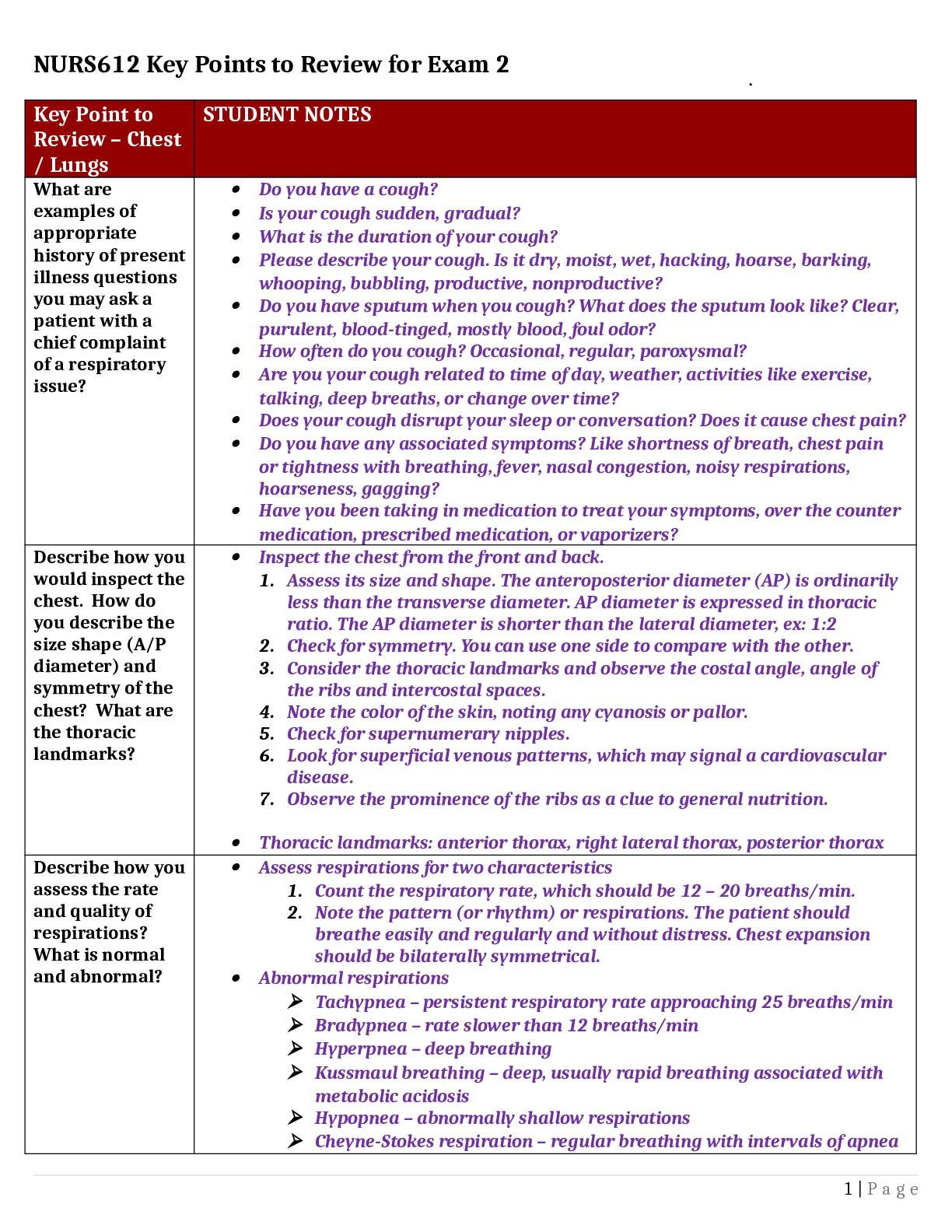
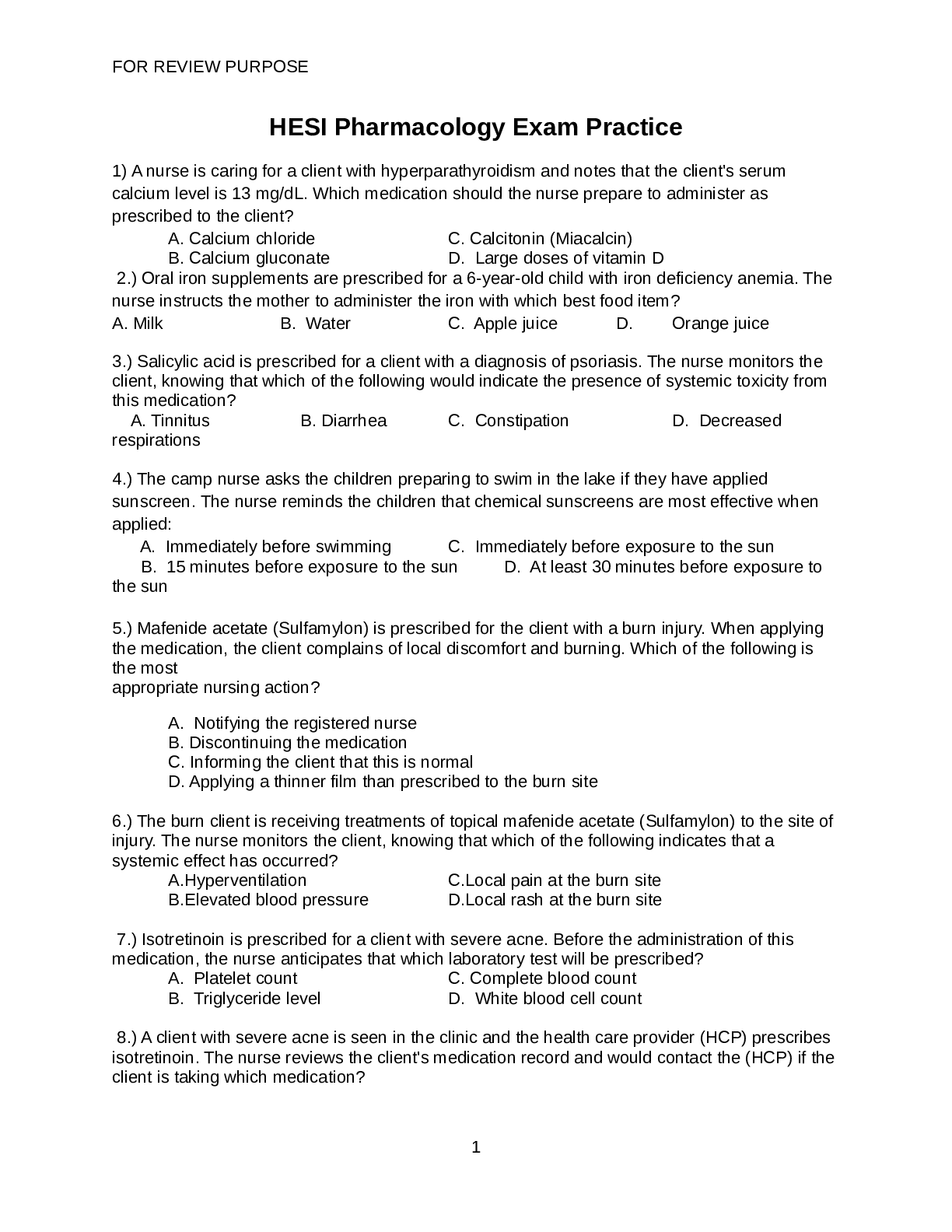
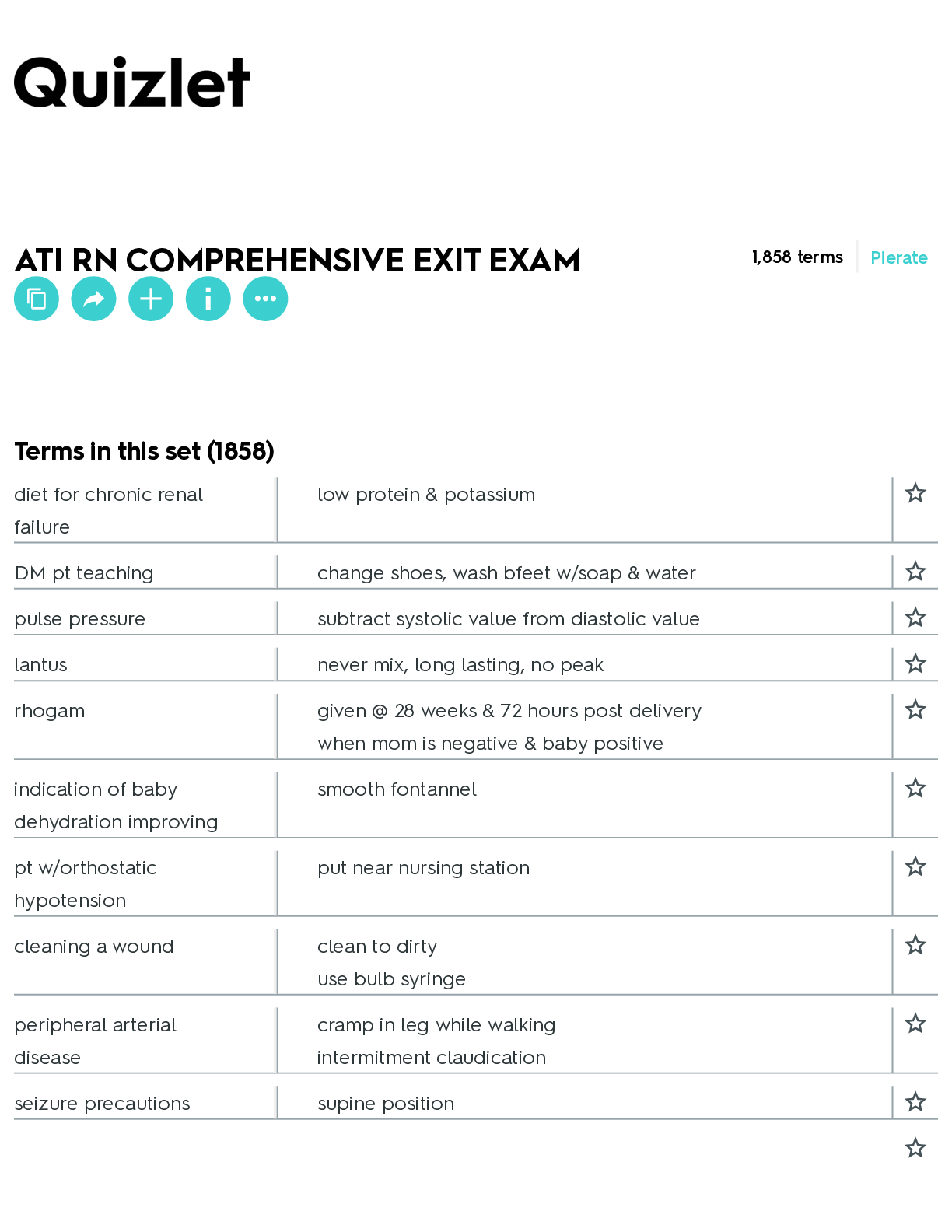
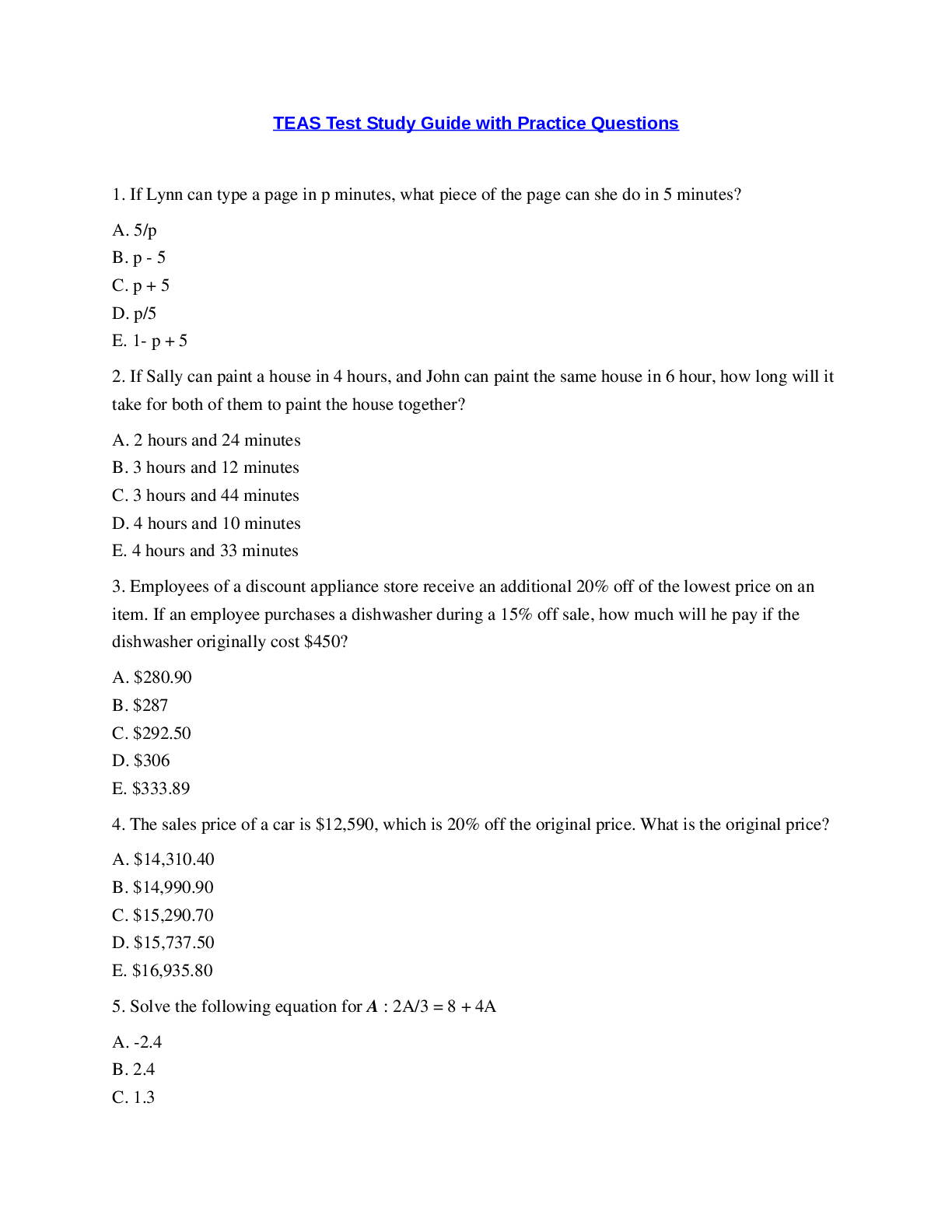
.png)

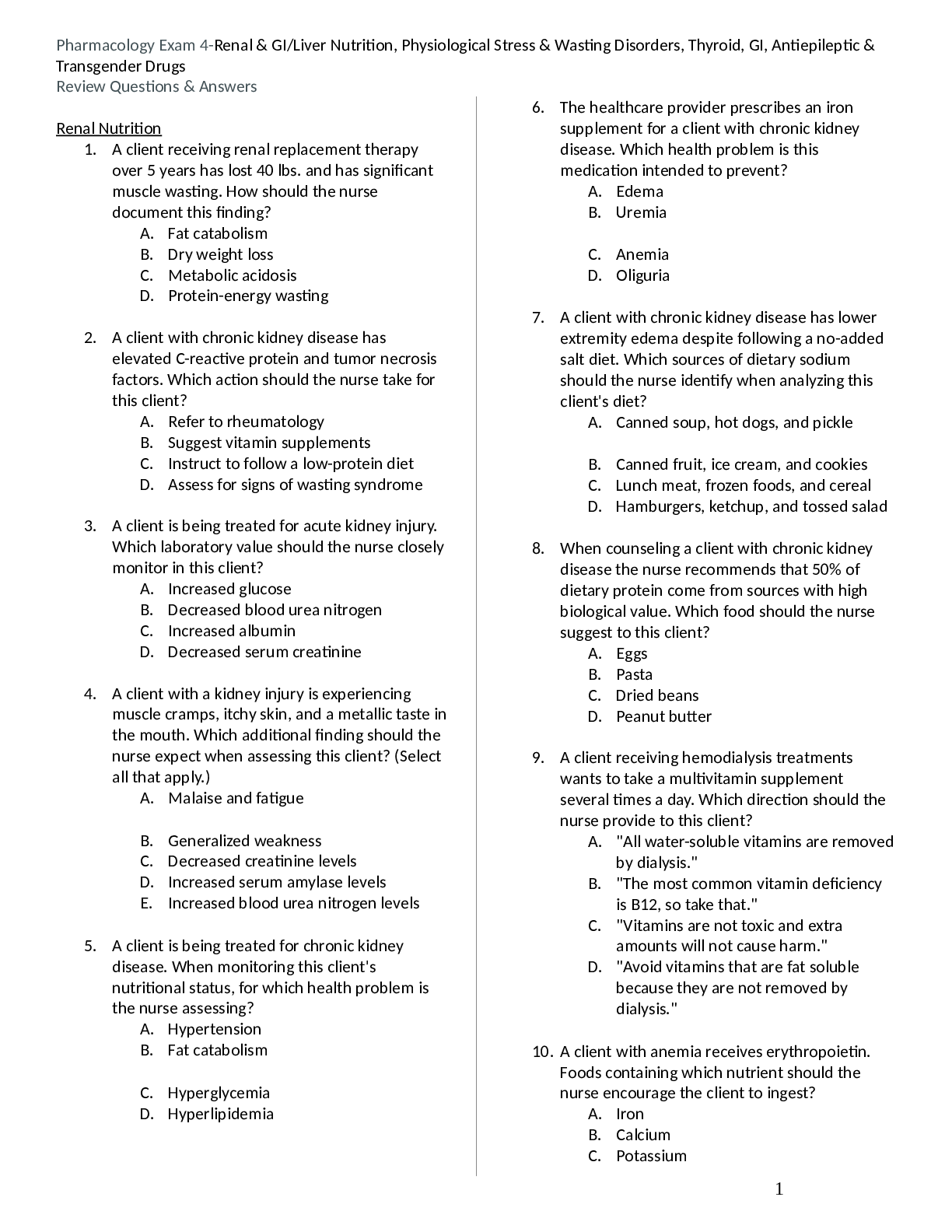
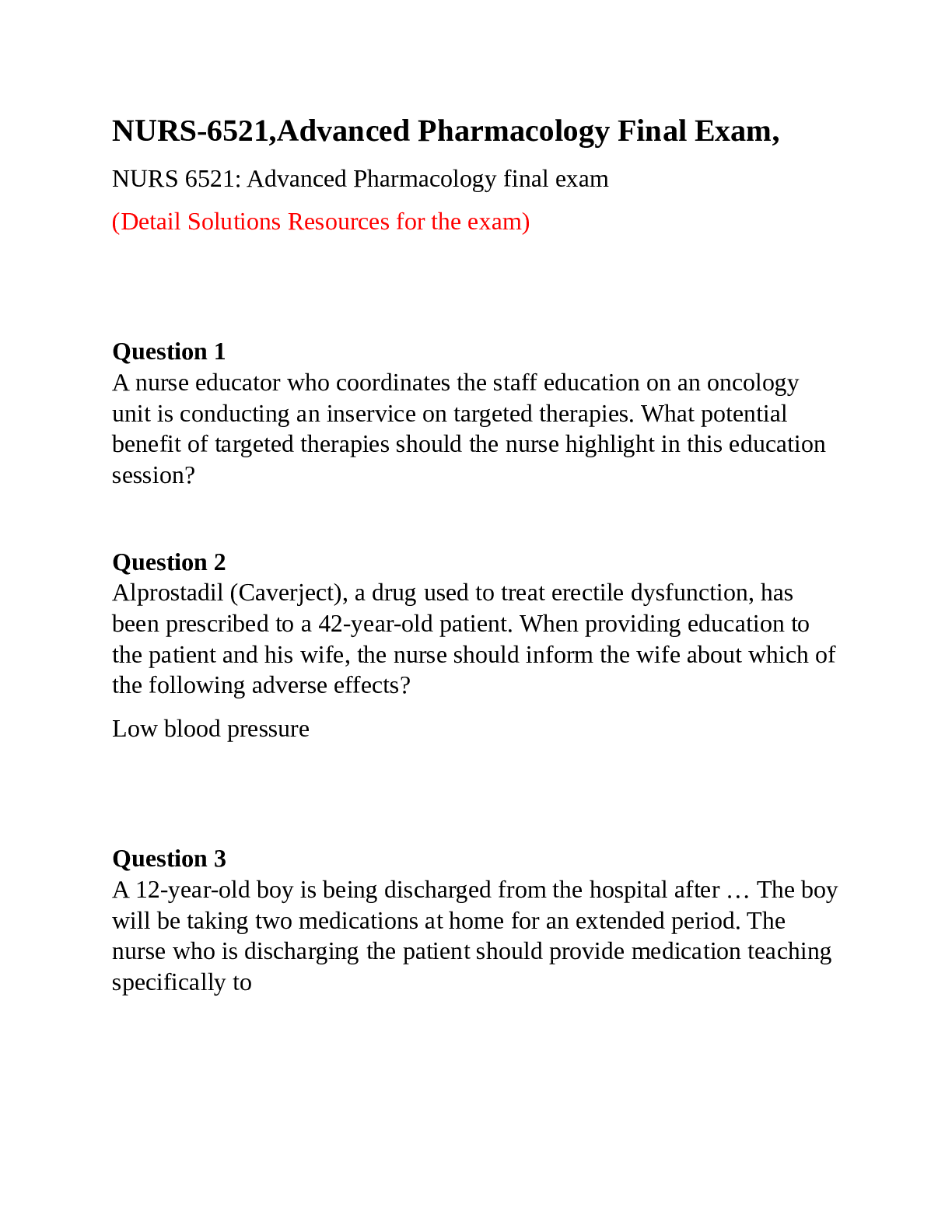



.png)











